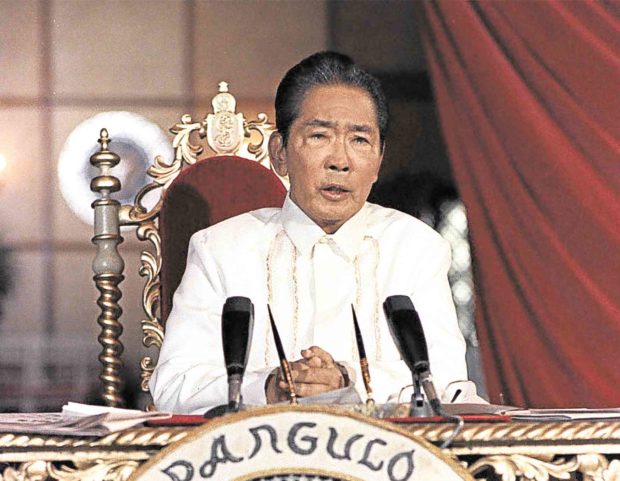Dictator created the country’s first human rights commission

Marcos: Two days after decree was issued, the 1986 Edsa People Power Revolution took place.
Netizens lashing out at the House of Representatives for approving a P1,000 budget for the Commission on Human Rights (CHR) have described the attempt to muzzle the agency as a prelude to the return of Marcos’ martial law, an era when human rights were all but nonexistent.
But ironically, it was the dictator himself who created the CHR through Presidential Decree No. 2036 issued on Feb. 20, 1986.
Call it an act of a dying man, an attempt to sanitize an almost 20-year rule characterized by warrantless arrests and detention, abuses and torture, and a last-minute bid to appease the opposition and stay in power.
After declaring martial law in September 1972, Marcos closed down Congress and became a one-man legislative system that issued proclamations, general orders, presidential decrees and executive orders.
He retained his power to make laws even after 1978 when the Batasang Pambansa or National Assembly was convened.
In all, Marcos issued over 6,200 laws. The decree creating a human rights commission was his 2,036th presidential decree, and one of his last.
Global condemnation
The decree was a response to the global condemnation of human rights abuses in the country.
On Nov. 22, 1975, a mission by Amnesty International (AI) noted that it “had not anticipated the extent to which torture was practiced against martial law detainees.”
In its report released in September 1976, AI documented cases of torture among students, journalists, engineers, teachers and pastors who were arrested on mere suspicion of rebellion and tortured in Marcos’ prisons.
Some of the detainees were charged with rebellion and conspiracy to commit rebellion. Some did not even know why they were arrested. Many were not even charged, the group said.
As a result of torture, the report added, some landed in mental hospitals and psychiatric wards.
The report detailed torture methods used on the prisoners interviewed. These included prolonged beatings with fists, as well as kicks and karate blows; beatings using rifle butts, heavy wooden clubs and family-size soft drink bottles; pounding heads against walls or furniture; burning of genitals and pubic hair with cigarette lighters; falanga, or beating the soles of the feet; and “lying on air,” or San Juanico Bridge, which had detainees being made to lie with their head on a chair or bed and their feet on another chair or bed. They were then beaten and kicked whenever their body sagged.
In all, according to AI, over 100,000 were considered victims of martial law: 70,000 were arrested, 34,000 tortured, and 3,240 killed by the military and the police.
Marcos issued the decree creating the CHR in February 1986, amid the massive protests and boycott of products of Marcos cronies that followed his declaration as winner in the snap presidential elections reported to be fraught with fraud, violence and the mass disenfranchisement of voters.
Attached to the Office of the President, the commission was supposed to be a multisectoral group composed of representatives from government and the private sector, with the Vice President and the Prime Minister as chair and vice chair, respectively.
Its members would include the presidents of the Integrated Bar of the Philippines, the Civil Liberties Union of the Philippines, the Trade Union Congress of the Philippines, the Federation of Free Farmers, the Civic Assembly of Women of the Philippines, the Catholic Bishops’ Conference of the Philippines, the Ulama Association of the Philippines and the Association of Christian Churches of the Philippines.
One of its chief functions is to prepare “integrated program” to protect human rights in the country.
The urgency of the situation behind the CHR’s creation at that time was reflected in its provision stating that: “The commission shall constitute itself immediately.”
Too late. Two days after the decree was issued, the 1986 Edsa People Power Revolution took place, and the Marcoses were ousted.














